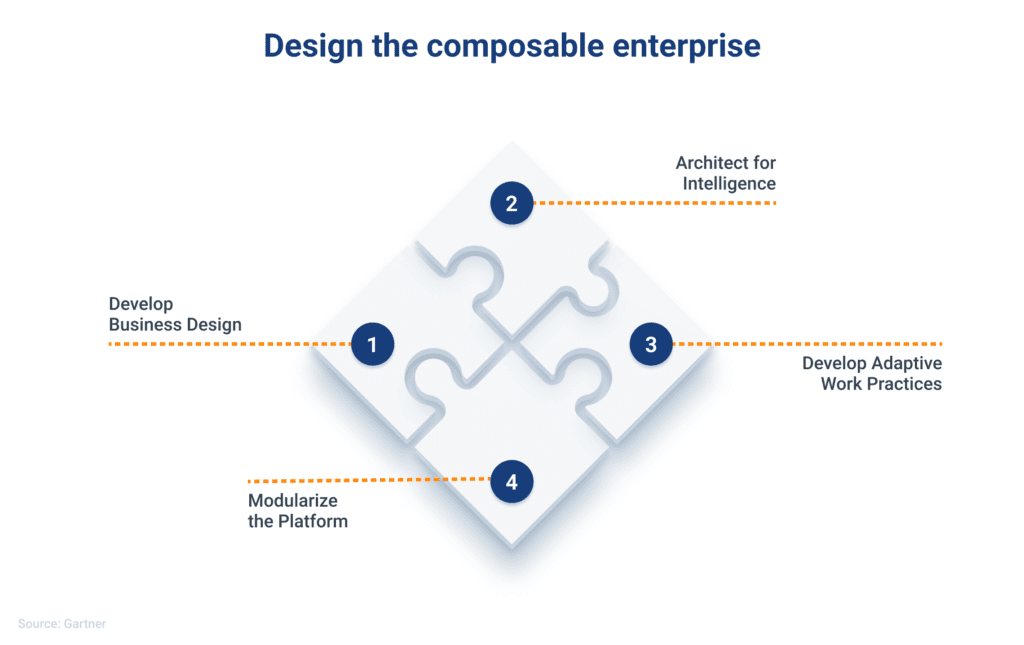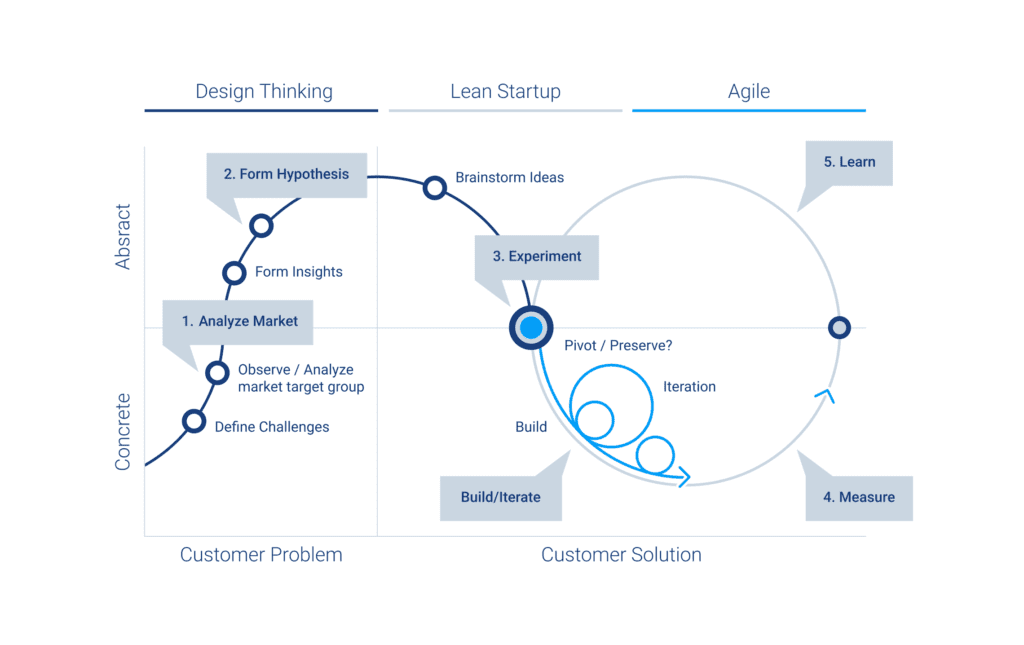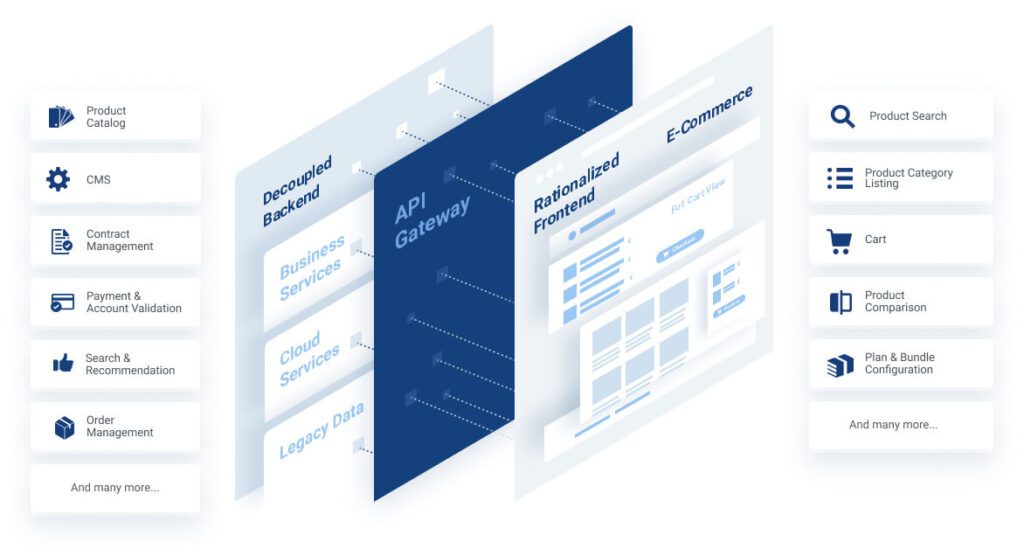
The COVID-19 crisis has revealed weak points in telcos that have not been (sufficiently) addressed for many years now.
Today, telco customers expect providers to offer digital service on the same level to which they have become accustomed from other services and platforms in everyday experience. This is another wake-up call to speed up the digital transformation, which is also indispensable for resilience in times of crisis.
For such reorganization to truly succeed, the internal transformation must encompass more than just IT – while also incorporating different business levels. This also means that CIOs’ understanding of their roles must change. And since digitalization is the boss’s problem, the consequence is that CIOs have a new task, namely, to communicate this understanding to the organization and advance the transformation to composable business.
Digitalize once and then profit permanently? Unfortunately, that is not the way things really work.
On the one hand, technical reorganization must go hand-in-hand with continuous adjustment of organizational structures. On the other hand, it must be possible to measure the digital target architecture and business organization and processes by their flexibility.
After all, a communication service provider (CSP) who wants to be digitally successful also must be flexible all the time: implement new things quickly, adjust, maybe even discard and try something completely new.
Rigid IT structures and cumbersome corporate structures stand in the way of this process and make it more difficult to focus on the customers. That is why the prerequisite for the digital transformation is composable business. It requires a triad of composable architecture (i.e., the IT architecture), composable technologies (the technological solutions) and composable thinking (the right mindset).
Companies will have to be composable, modular and configurable – thus making them flexible and fit for the future.
This means that the framework for composable business must be regarded as a task for the whole company, not just for IT. In addition to developing technology platforms, this also includes business behavior, ways of working, work processes and information usage.
Accordingly, CIOs have a new role: As the people responsible for implementing a composable architecture, they also drive the restructuring into a composable business and become central figures for future business successes.
What are the benefits of composable business?
1. Using lessons from the COVID-19 crisis
Like a Litmus test, COVID-19 revealed existing problems in many areas and the need to eliminate them became acute. CSPs now realize where they need to improve with respect to digitalization to react flexibly to new market requirements in the future, keep their customers and continue to grow.
For CIOs, speeding up a digitalized business basis by developing a composable business has become a critical task.
2. Competitive ability in the future
Market research and consulting company Gartner also predicts that composable business will become increasingly relevant. Gartner predicts:
- that, by 2024, companies with a composable approach will be 80 percent faster than the competition when implementing new offerings and
- that 80 percent of the companies will use iterative, experimental methodologies such as design thinking, lean startup, and agility.
3. New success factors for CIOs
How fast will the CSP be able to grow with the market, confront new challenges and use new technologies? How quickly will CIOs detect such developments and trends? How long will it take until IT can satisfy the resulting internal and external requirements?
In the future, CIOs, their IT, and their teams will be measured by this. Companies can better confront these challenges with a composable business framework.
From composable architecture to composable business
“Composable business” means building an organization from largely autonomous, exchangeable building blocks. Such a modular structure enables a company to adapt quickly to changing external influences, such as a shift in customer values or sudden changes to the supply chain or available materials, and to reorient itself quickly.

Step 1: (Re)design of the business model
The transformation to an agile procedure for developing the business model in order to enable a flexible response to changes.
Step 2: Information as the basis for decision-making
Relying on information as the basis for smart decisions, develop new services and products.
Step 3: Adaptive methods
Use iterative and collaborative work methods and design technologies in interdisciplinary teams.
Step 4: Modularization of the platform
Make the technological platform flexible and adaptable – with a modular structure, the transformation enables quick implementation and the linking of existing, new and future solutions.
The implementation: Innovation through design thinking, lean start-up, and agility
“Design thinking” is an interdisciplinary process that reveals solutions for complex and nearly insoluble problems in a technically feasible, commercially sensible, and emotionally comprehensible manner.
At first glance, this approach may scare people off (because of how time-consuming it is!) but it enables quick, low-threshold, iterative implementation. CIOs do not have to create the “final” solution immediately. Instead, the task is to make sure that IT can adapt dynamically and provide greater flexibility in the future.
And this includes making companies aware of the significance of the composable business. The goal is to establish teams that can develop solutions in agile fashion, combine them, build new ones, and make decisions independently – always based on data and with a focus on customer experience.
This also means that CIOs do not absolutely have to decide everything themselves. That is their team’s job. In the interest of agile methods, however, it is important that the CIO is included in regular discussions not just with the team but also with the CEO and corporate management.
CIOs’ role in an organization goes beyond IT management: they are crucial to ensuring the company’s success. With the implementation of composable architecture and composable technologies, they inspire composable thinking – and thus take important steps toward a composable company.
For this approach to function as it should, teams must work in collaborative, cross-functional and, optimally, also business-driven fashion.

For this approach to function as it should, teams must work in collaborative, cross-functional and, optimally, also business-driven fashion.
- The starting point is always the market and its target groups: What are the customers’ problems and needs, and which digital services would be the best response to these?
- The answers are brief, iterative, and agile: A service goes live early on with the most critical functions and can then be tested directly by customers – and based on this, evaluated, and improved.
- Thanks to composable architecture and container infrastructure, expanding the solution is easy: Individual IT services can be enhanced and scaled independently of one another via APIs.
The result: quick time-to-market, high quality and easy expansion of the technological solution.
Composable architecture: Modular, flexible, scalable
Silos and rigid architecture put the brakes on digitalization. However, CSPs have grown monolithically. Data from product catalogs, contract management or payment and credit checks is not linked.
To implement a flexible microservice architecture, it is crucial to break down such silos and integrate legacy systems step-by-step into innovative solutions – normally via APIs and connectors.
The so-called “decoupling” of a customer-oriented front end from the back end layer provides a concrete example of how such an end-to-end digitalization of the process chain can be implemented so that it is TMF-compliant.

The benefits:
- Increasing of essential KPIs: Productivity, efficiency, quality, time-to-market
- Different internal teams ensure greater speed thanks to modular breakdown into individual elements
- Flexible design of customer touchpoints
- Personalized customer experiences
- Freedom to try things out and test them
- Agility
- More efficient scaling of performance
Conclusion: CIOs must think ahead
A modular, composable structure provides the essential prerequisites for long-term, successful, customer-oriented digital business models for CSPs. If CIOs succeed in transferring this view from the IT environment alone to all processes and to the entire organization, they will give their companies a decisive push toward digitalization – and perhaps also a decisive competitive advantage.